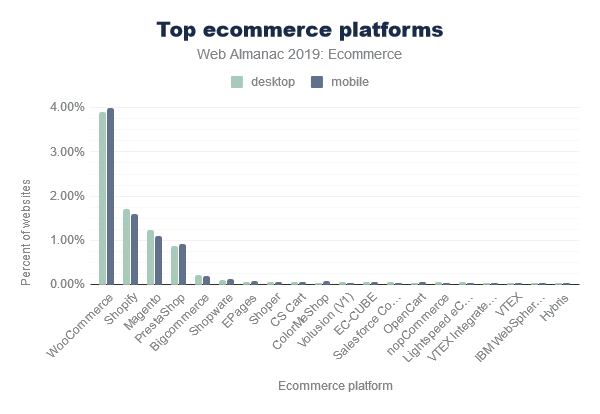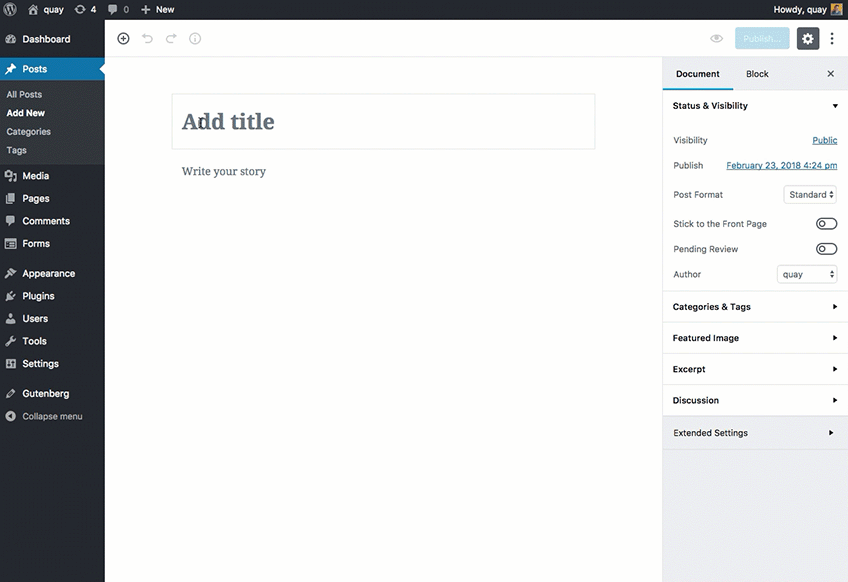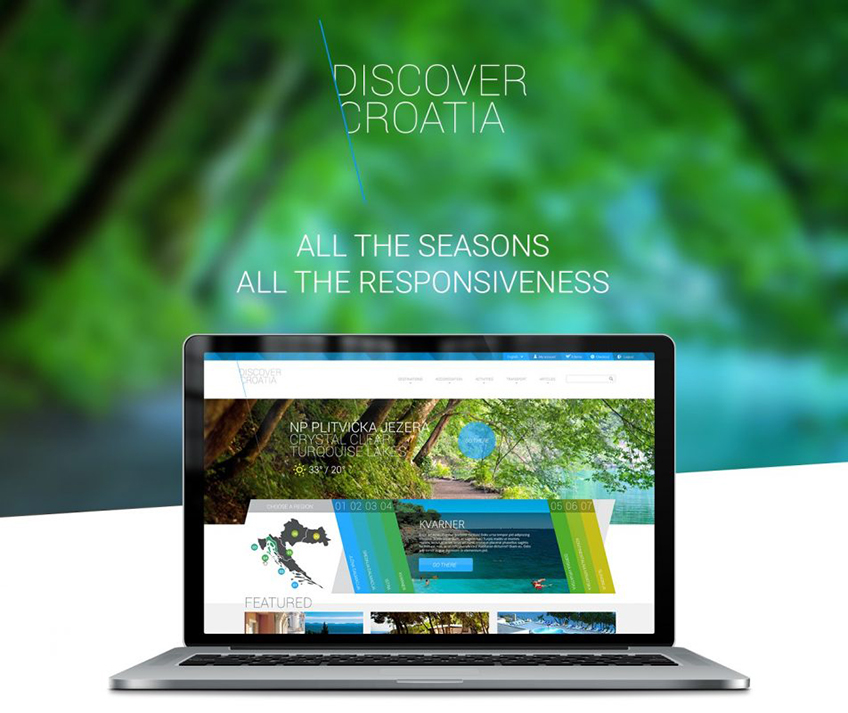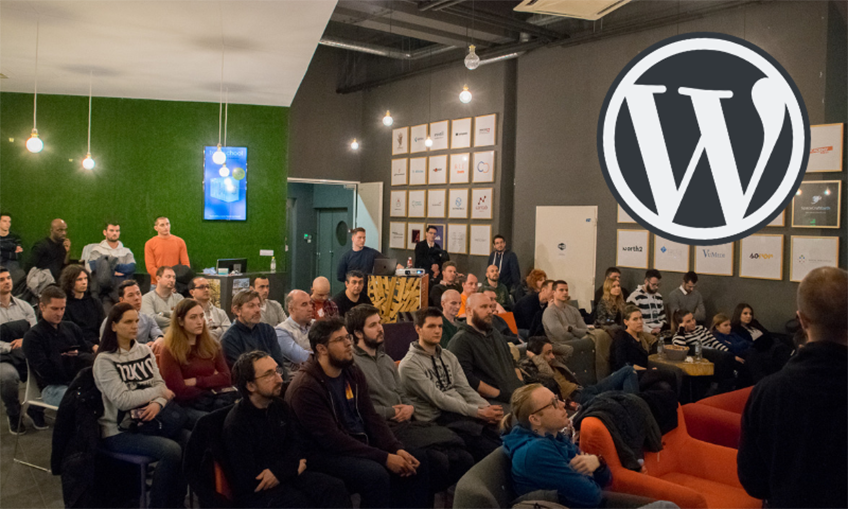eCommerce startup guide 1/3 – WooCommerce and democratization of eCommerce
eCommerce designers, gurus and developers have been advising, begging and shouting for a whole decade. They draw graphs, sit in meetings and whisper to clients that eCommerce is just the thing for their business! In the sea of online shopping platforms, one stands out – WooCommerce.
“… It’s like having an open office 24/7 that runs automatically without a cashier …” says the young developer with proud approval of his PM colleagues. Even the analogies and clues at the end of the meeting didn’t help – “Listen, those “Internets” are good, but we haven’t got time for that. Let’s give these young people Opel Corsa prize game, and wrap this up. “ The Berners Lee team would probably throw a flipchart at a client, because beware, 30 years ago (!) young CERN scientists embedded eCommerce at the very core of the web – one of the initial HTTP “server response” codes is the 402 – so-called payment Required Code.
COVID-19 and the pathway for bigger eCommerce adoption
Apologies for geeking-out, but we are witnessing a new age where grandparents are having vivid dreams about eCommerce and online shops are becoming the front line of digital business. On top of that, rightfully scared companies are catching the last train to maintain interaction with their customers. And as many memes already show, Covid-19 “stole the show”, replaced the before mentioned gurus, and solely showed business owners how to find time for an eCommerce trip. People are like that – they exercise more efficiently with a trainer, learn more thoroughly when a strict professor gives them F, and invest more generously into their online shop when being forced by an invisible and agile enemy.
Currently there’s chaos in the market. The Corona`s eCommerce takeoff has generated new gurus and phonies. Every day, more and more tools for creating webshops are appearing, each claiming to be the best one for building your digital system. At “eCommerce Croatia” Facebook group, questions like “how to open a web shop” are as popular as disinfectants. There are many opinions, but the problem is that the crisis stimulates irrational and hasty decisions that in the end could (and probably will) shut down businesses. Throughout the article I will explain why the use of proven and reliable systems, i.e. knowledge that has been in the industry for a long time, is much needed right now.
WooCommerce is catapulted by massive WordPress market share
When analyzing real numbers, one can see that WooCommerce is the leader of all eCommerce systems. Woo`s share in the overall number of websites on the Internet is larger than all three of its competitors (Shopify, Magento, PrestaShop) put together [2]. Through this article, I’m going to write WordPress or WooCommerce alternately, but it’s actually the same platform. To make it easier for new readers, WooCommerce is an additional tool to turn a WordPress-powered website into an online store.

For 17 years, “Publishing Democratization” has been a WordPress catchphrase. Originally conceived as a blogging system, this OpenSource content management tool (CMS) has outgrown itself and became the backbone of the internet – or so we like to say. But the truth is, WP is used by 63% of all websites that have CMS [1], and by doing so it fulfilled its mission of making it much easier for people to create diverse online content. This is also the basis of its widespread use – WP is used by state portals, corporate headquarters, media / NGO services and eCommerce apps because it puts content and “ownership” in the center of digital operations.
Although WordPress / WooCommerce is a successful software according to most current parameters, there are certain myths and misconceptions surrounding it. We will go through 4 ubiquitous topics to explain why WooCommerce is a good choice for creating eCommerce apps.
The Fusion of eCommerce and content
From the beginning, WordPress has been recognized as a blogging platform, a tool for “quickly” publishing content on the web. The world-renowned catchphrase “5-minute install” just pushed the whole WordPress among tools that are allegedly out of place in larger organizations.
Technically speaking, WordPress became a full-fledged online content management system in 2005 as its creators made it possible to create static pages and customizable menus. With these elements, one could create any kind of website powerful enough to stand side by side with once popular Joomla or DotNetNuke. Exactly this version of WordPress 1.5 (Billy Strayhorn *) marks a takeoff from the blogging platform towards a complete web publishing tool.
A version of WordPress 3.0 ( Thelonious Monk *) was released in the summer of 2010 with an innovation that supports creating any type of content, not just blogs or static pages. Right then, WooCommerce was established, allowing website owners to create products as content units. At that point, WordPress became a platform for eCommerce actions as well. This became an important concept because it allowed users to connect and interact with all the content units they had on the online store – news, actions, products, brands, collections, theme products, landing pages, microsites … all of which can be created within the same WordPress / WooCommerce system. That kind of content fusion is something that other eCommerce systems can only dream of.

Gutenberg and WordPress of the future
2018 was a turning point for a text editor. The WP community released the long-announced Gutenberg editor, and as a result WordPress has been given the opportunity to create even more complex content. A big modification was made by introducing the public with the concept of writing in blocks, rows, and columns – something that modern online tools like Medium, Wix, or SquareSpace have been promoting for several years. Gutenberg’s goal is to provide web shop owners to “stack” content exactly as they want to without having to seek programming assistance whatsoever.
The new concept was actually a strategic response to modern competition, since it was noticed that some users refuse to use WordPress yet automatically choose Medium or Wix to launch a website. WordPress grew year by year at a rate of 17%, while Squarespace or Wix grew at a rate of approximately 210%!

Gutenberg essentially lets you create various web pages that contain your products, brands, promotions, texts and multimedia; and all that arranged in a way that suits an online store without the additional developers or designers help.
Although not fully “polished” yet, the new editor will, in the long run, allow large teams to work on engaging and interactive content within WooCommerce itself. The current Gutenberg problems are the new content creation concept issues and the tool accessibility. However, thousands of volunteers are actively working on the tools development, collecting feedback from over 20 million active users daily. [4], and it is precisely the number of volunteers crucial for the next segment – Safety.
Security and privacy
The number of security threats on the WordPress platform is considerably small. MacOS, Windows, various Linux distributions, and even the PDF format have a far greater number of reported security threats. For example, Debian has approximately 9,800 reported CVE (Common Vulnerabilities and Exposures) security threats, while Joomla, Drupal or WordPress each have about 1100. The figure itself doesn’t say much about the severity and degree of the threats, but it’s interesting information to consider when it comes to security tools like WordPress – its core is more secure than your #StayHome tools.
Now you will probably say “Ok, but that means my online store is publicly available and subjected to various attacks.” And that is true. However, the catch is in the implementation and the day-to-day care that developers bring to the project and the fast and efficient community is exactly the main reason for preventing security issues from happening. Hundreds of active volunteers have been polishing every aspect of WordPress and WooCommerce core since 2003. If a security risk arises, the system automatically upgrades itself, and the time required to apply the patch is within one-day maximum. Potential security issues are found in two additional pillars: external modules (“plugins”) and external visual web design templates– a.k.a. themes.
In early May 2019, a version of WordPress 5.2 (Jaco Pastorius) was released, bringing with it the long-awaited security enhancements and the “enterprise-grade” level of upgrade management. To attack all the world’s WP sites, you would need to hack the main upgrade server (api.wordpress.org) and access to it would infect them all. This is no longer possible due to the newly installed encryption mechanisms. Project that is currently in progress called Gossamer will apply the same upgrade mechanisms to authors of external modules and topics. [3]
As far as user privacy is concerned, I have to mention the ubiquitous GDPR – WordPress has been compliant with EU regulations in several fields since version 4.9.6 (Billy Tipton). Here are a few upgrades to keep in mind:
- Tool for consenting user comments posts
- Tools for exporting and deleting complete customer data and orders have been implemented in the core system
- An entire module for generating privacy pages and terms of use has also been built
But keep in mind, developers in charge of your eCommerce implementation still have to keep an eye on GDPR policies, how to manage their database, users and orders (Neuralab also introduced the ISO 27001 standard). Still, it’s a regular procedure for every eCommerce system, not just WordPress / WooCommerce.
Affordability, adaptability and inclusive design
Speaking of EU regulations, a new set of rules made in 2016 defined how eCommerce apps should be affordable and easy to use. Accessibility (a11y) is still a crucial topic in the web industry, and now it has its legal framework. There are two important dates:
- All web applications created after September 2018 should be accessible and easy to use by September 2019.
- All existing web applications that were created before September 2018 have until September 2020 to comply with all accessibility guidelines

The WordPress / WooCommerce system has a handful of tools that makes it accessible and easy to use, and there is also a large community of volunteers that make sure all code lines, design decisions and modules are built according to the WCAG 2.0 system, which is also the EU directive requirement. This is an advantage over other eCommerce systems that choose to ignore it. Specifically, testing accessibility issues and implementing them requires a huge number of volunteers and their comments. Other systems like Kentico, Drupal, Sitecore, or Magento do not have such a large community of people working on these types of issues. Accessibility topics are not only reserved for users with disabilities or special needs. Also, an accessible web is not created just to satisfy the bureaucratic procedure – it is made for the sake of your own users and improving online sales (conversions), and it is exactly the accessibility subject that concerns all users together. Therefore, the more people working on a11y functions, the quality of solutions will be better.
The point is that the difficulties of using the website can be temporary – just try to buy a product if you are in a plaster cast or the moment ago the sun came up behind your back and lit up your laptop! On the other hand, accessibility issues can also be situational – using a tablet and watching a recipe while cooking with one hand. Or talking on a mobile phone in a crowded loud place. These topics are taken so seriously in the WordPress community that there had been job threats and delays of new features – and this takes us to the last segment, a community that gathers around the WordPress and WooCommerce ecosystems.
Big community and ecosystem
“Software devours the world” shines from all conference powerpoint presentations, and this statement is more emphasized with open technologies – OpenSource software is in fact the one that eats the world. Take the conferences as an example – the WordPress community in Croatia has organized 34 events so far across Croatia (5 events in Split, 2 in Pula, 25 in Zagreb, and 1 in both Rijeka and Virovitica). More importantly, all of these events are organized by dedicated volunteers who devote their free time and energy to bring the magic of WP technology to a wider community. In neighboring Serbia, they managed to organize a global gathering of the WP community, and the total number of visitors numbered between two and three thousand people.

It was already mentioned that WP is used on over 60% of all CMS sites, but it’s even more striking that Linux (operating system) is used on over 67% of all server computers. I will explain 4 theoretical concepts of why WooCommerce as an OpenSource tool is better than closed (custom-built) proprietary systems…
Consensus and democracy, not authority
OpenSource “code” is of higher quality because it is agreed upon, not dictated. That way, the app is built on knowledge of multiple developer volunteers. Although such a process is “rougher” than simpler direct management, in the long run it leads to a marketable “stronger code” that incorporates more experience and knowledge. The work previously mentioned on Gutenberg and Accessibility projects is a typical example of such a movement.
Decentralization above centralization
Decentralization is the Sancho Panza of consensus. It allows you to observe from multiple angles and pay attention to market details unnoticed from the hidden corners of narrow centralization. Decentralization achieves a more pronounced project dynamic and responsiveness to the needs of the market, both from the design, programming or security side that we mentioned at the beginning of the article. Twice as old Linux, as another example of an OS project, has been living in the open source market for 30 years.
OpenSource builds the whole market, not one company
One of the main features of real OpenSource projects is the development of the entire market rather than just one company – Linux, Apache and WordPress have democratized and strengthened internet publishing in the broadest sense. WooCommerce does the same for eCommerce and web sales. All of these OpenSource tools enrich the entire digital market considering WooCommerce can be implemented by small retailers with only a few products, but large systems with millions of users can make the most of it as well. The latter, however, requires a tailored approach and the assistance of the outside experts community. Fortunately, there is a small army of them, and that brings us to our last trait …
WordPress, ie OpenSource, is independent and portable
OpenSource likes to grow, evolve and get out of its own box. The more open it is, the more likely for you to find a qualified programmer, implementer or consultant for your business. However, the other side of the coin, the so-called. vendor-lock-in, has been experienced by all the online stores that have based their business on custom systems maintained by “irreplaceable” developers. The Croatian market and its business manners have been fertile ground for such integrators. That practice leads to a programming code that is difficult to maintain and essentially doesn’t evolve. (In a crisis, you should additionally beware of agencies that want to sell you a quick “web shop” for a few hundreds of EUR).
Getting outside of the box is, after all, the biggest feature of OpenSource software. Continuous project development operated by a large community is a concept that every company should embrace. WooCommerce, Linux, Android and other similar platforms go side by side with an OpenSource strategy, and if we use the right tools in the right way, ideas turn into useful eCommerce projects that, in the long run, are beneficial for the whole public.
Other articles from this series:
- eCommerce startup guide 1/3 – WooCommerce and democratization of eCommerce
- eCommerce startup guide 2/3 – complete content plan that every web shop needs to have
- eCommerce startup guide 3/3 – Do It Yourself with custom domain, hosting and WordPress theme
- Addendum: eCommerce project – a cost or an investment?







